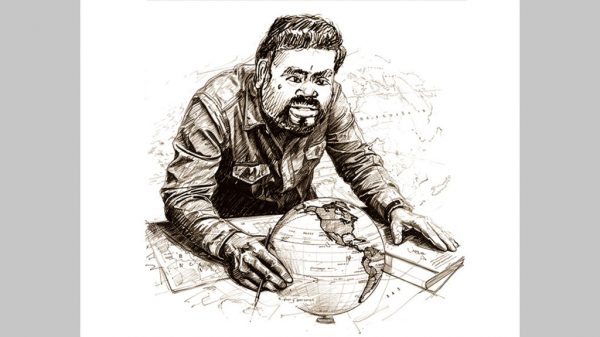Expectations from Bengali New Year 1429

The beginning of the traditional new year of a nation is considered very sacred to every nation in the world. Bengalis are no exception. The beginning of the Bengali New Year is one of the days of the year in the life of an ordinary Bengali who wants to forget all kinds of the filth of last year and awakens a new wave of joy in his heart in the New Year.
Bengali New Year has been the bearer of ancient and medieval Bengali culture and tradition for a long time. In the Bengali calendar, the Bengalis welcome the New Year with the beginning of Boishakh at the end of Chaitra, the last month of the spring season. The life of the Bengalis, manifested in the indescribable joy of the New Year, forgets all the sorrows and grieves of the last years and starts hoping for a new life.
The first day that comes to mind when talking about Bengali New Year is Pahela Boishakh. This day is the first day of the Bengali calendar. On this day, the entire Bengali nation, irrespective of country or religion, rejoices in welcoming the New Year. The Bengali New Year is celebrated with great pomp in Bangladesh and West Bengal as well as in some parts of the states of Tripura and Assam in India.
Generally, according to the Gregorian calendar, New Year is celebrated on the 14th of April every year in Bangladesh. During this time Bengalis became involved in various festivals. The day is celebrated with well-wishing procession, halakhata, various fairs etc. Artists welcome the New Year by singing songs at Ramna Batamul. The Bengali year begins by greeting each other as ‘Shuva Nabobarsho’ and praying for the well-being of all.
New Year is one of the most important days in the life of every Bengali. On this day, Bengalis from all over the world celebrate their national heritage. There are some special customs prevalent among Bengalis of all walks of life centring on this day. For example, on this day Bengali men usually dressed in Punjabi and Paijamas and women wear their traditional dress sari.
Moreover, on this day, there is a tradition of eating different types of fried food including ‘Panta-Hilsha’. In Bangladesh, this day is celebrated with great joy as it has been declared a public holiday. Bengalis actively participate in various fairs and festivals in an atmosphere of absolute joy all around. Moreover, this day is one of the most important days for the culture-loving Bengali nation to practice their culture.
Through this day various festivals of Bengal are observed. Traditional folk culture takes alive. One of those festivals is the Boishakhi Mela organized to celebrate the Bengali New Year. This fair is also organized in the cities and towns of Bangladesh.
Artists from different villages bring their regional art to the fair to present it to the people of cities and towns. Rural culture of Bengal, such as various folk songs, folk dances, etc., gained their own status in this fair. Attempts to revive the lost regional culture of Bengal through the celebration of New Year can be seen through this fair.
The observance of ‘halakhata’ is another part of the Bengali New Year celebrations. The insanity of the Bengalis centred on this New Year’s festival is especially noticeable. The significance of this festival is to check the status of business accounts at the beginning of the year.
Although the celebration of the New Year in Bengali seems to be a fair combination of innumerable festivals, the overall importance of the New Year celebration in Bengali life is immense. The success of the festival lies in paving the way for the liberation from the mental fatigue, ugliness and despair that has arisen in the life of the people for a whole year in the past. Bengali New Year celebrations are a way to get relief from the sorrows of the life of Bengali people.
By celebrating the New Year through various festivals, the Bengalis embrace the assurance of a new life by sacrificing all the filth and decay of the old year. Moreover, through the celebration of the New Year, a wonderful sense of nationalism was formed among all Bengalis. Through the celebration of various festivals, the innumerable valuable folk culture of Bengal became known in the court of the world. A bridge of unity was built between all Bengalis all over the world.
In the present era, due to the dominance of foreign culture, Bengali’s own culture is on the verge of extinction. The celebration of the Bengali New Year can be especially significant in this crisis of Bengali national identity. However, the sad thing is that nowadays in various places of Bengali New Year celebrations, a touch of subculture has been noticed.
To preserve the sense of nationality and self-national character of the Bengalis from this subculture, it is necessary to take care of the self-culture without delay. In this context, it is necessary to mention the initiatives such as cultural festivals organized by various government and non-government organizations, efforts to bring the culture of rural Bengal to the public, etc.
Bengali New Year is the culture of celebrating the Bengalines or the ethnic identity of Bengalis. It is only desirable that the Bengaliness of Bengalis be globalized through the celebration of New Year, that Bengali culture is respected in the world, and that the Bengalis become concerned about the prosperity of their soul and culture by abandoning a life philosophy of the culture of luxury. It is the hope that with the celebration of the Bengali New Year, all the darkness of life will remove. Let’s rise in the light of hope of new life. Get rid of pandemics, wars, diseases, mourning and all evil activities.
The writer is a researcher and development worker
Source: Sun Editorial





























Leave a Reply